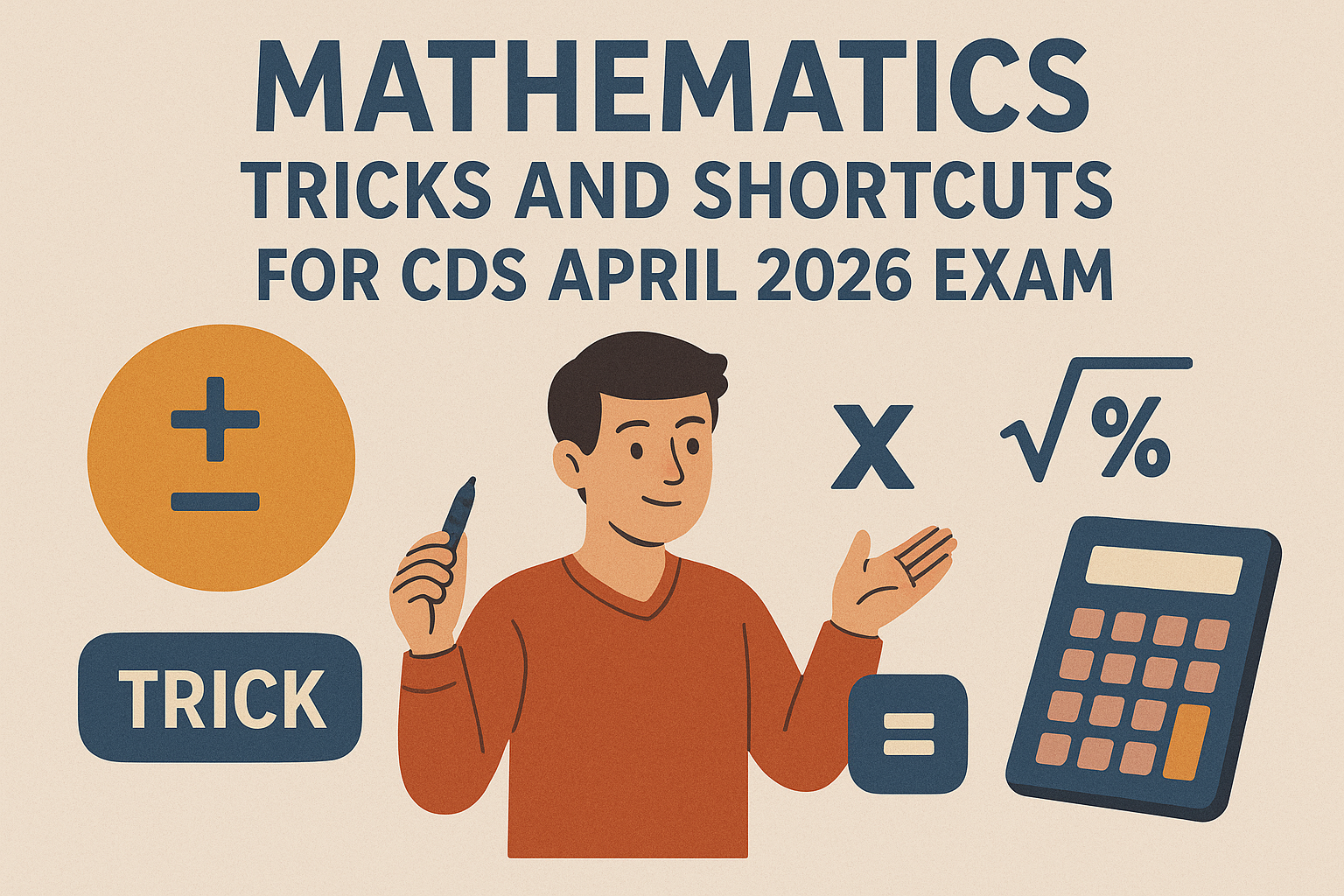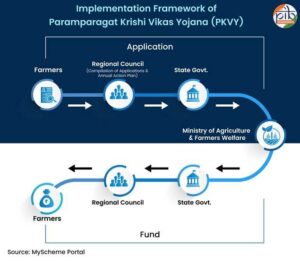The Combined Defence Services (CDS) Exam is one of the most prestigious competitive exams in India, conducted by UPSC for aspirants aiming to join the Indian Armed Forces. The Mathematics paper in CDS April 2026 carries 100 marks with 100 questions, making it one of the most scoring yet time-consuming sections. To maximize your score, mastering mathematics tricks and shortcuts is crucial.
In this guide, we’ll cover the best shortcuts, tricks, and preparation strategies to help you solve CDS-level mathematics questions quickly and accurately.
Why Shortcuts Are Important for CDS Maths?
Time-saving: With only 120 minutes for 100 questions, shortcuts save precious seconds per question.
Accuracy boost: Using tested formulas and tricks reduces calculation errors.
Confidence in exam hall: Knowing quick methods keeps you calm under pressure.
Scoring advantage: Since maths has no sectional cutoff, high scoring in this section improves your overall selection chances.
Important CDS Mathematics Topics with Tricks
1. Arithmetic Shortcuts
Percentage to Fraction Conversion:
50% = 1/2, 33.33% = 1/3, 25% = 1/4, 20% = 1/5, 12.5% = 1/8.
Helps in solving profit-loss and ratio problems instantly.
Simple Interest (SI) & Compound Interest (CI):
SI = (P × R × T) / 100.
For CI of 2 years = P[(1 + R/100)² – 1].
Shortcut: Difference between CI and SI (2 years) = P × (R²/10000).
2. Algebra Tricks
Squares of Numbers Ending with 5:
Example: 75² = (7×8) | 25 = 5625.
Cube Shortcut:
(a + b)³ = a³ + b³ + 3ab(a+b).
Great for expansion-based problems.
Common Identities:
(a + b)² = a² + 2ab + b².
(a – b)² = a² – 2ab + b².
a² – b² = (a + b)(a – b).
3. Geometry and Mensuration
Area of Right-Angled Triangle:
Area = (1/2) × base × height.
Circle Shortcut:
Circumference = 2πr, Area = πr².
Trick: In equilateral triangle with side ‘a’ → Height = (√3/2)a, Area = (√3/4)a².
4. Trigonometry Shortcuts
Standard Values to Remember:
sin 0° = 0, sin 30° = 1/2, sin 45° = √2/2, sin 60° = √3/2, sin 90° = 1.
Key Identities:
sin²θ + cos²θ = 1.
1 + tan²θ = sec²θ.
Shortcut for Heights & Distances:
Use tan θ = perpendicular/base and cot θ = base/perpendicular.
5. Speed, Time, and Distance
Shortcut Relation: Speed = Distance ÷ Time.
Conversions:
1 km/hr = 5/18 m/s, 1 m/s = 18/5 km/hr.
Relative Speed Trick:
If moving in the same direction = (S1 – S2).
If opposite direction = (S1 + S2).
6. Number System Shortcuts
Divisibility Rules:
Divisible by 3 → Sum of digits divisible by 3.
Divisible by 11 → Difference of odd-even place digits divisible by 11.
HCF and LCM Shortcut:
Product of two numbers = HCF × LCM.
Proven Strategies for CDS Maths 2026
Practice Previous Year Papers: Helps in understanding question patterns.
Time-Bound Practice: Use a stopwatch for speed enhancement.
Memorize Squares & Cubes: Learn up to 30 for quick calculations.
Formula Chart: Keep a one-page formula sheet for revision.
Mock Tests: Attempt at least 2–3 mock tests weekly.
Why Choose Victor Growth for CDS Preparation?
At Victor Growth, we provide:
Expert faculty specializing in CDS Mathematics tricks and shortcuts.
Exclusive shortcuts handbooks for quick revision.
Regular mock tests and doubt-solving sessions.
Personalized mentorship to help aspirants clear CDS in the first attempt.
If you’re serious about cracking CDS April 2026, Victor Growth is your trusted partner for success.
FAQs on CDS Mathematics Tricks & Shortcuts
Q1. How many questions are asked in CDS Maths?
Ans: There are 100 questions carrying 100 marks in the Mathematics paper.
Q2. Are shortcuts enough to clear CDS Maths?
Ans: Shortcuts help save time, but regular practice and conceptual clarity are equally important.
Q3. Which book is best for CDS Maths shortcuts?
Ans: Books like R.S. Aggarwal’s Quantitative Aptitude and Pathfinder for CDS cover shortcuts well, but joining Victor Growth coaching ensures structured learning.
Q4. Can I crack CDS Maths without coaching?
Ans: Yes, but with the right guidance from institutes like Victor Growth, you can save time and increase your accuracy.
Q5. How much time should I devote daily for CDS Maths?
Ans: Ideally, 2–3 hours daily with a focus on problem-solving and revision of formulas.






